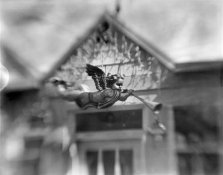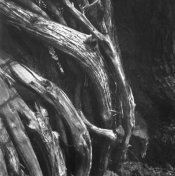Dug
Member
Pyrocat and Litho
Scootermm - I make enlarged negatives with the APHS film and use pyrocat, 1.5:1:100. I spent a lot of time mixing Dektol-like developers and altering contrast with various proportions of A and B developer. Could not get the consistency I wanted and found the contrast going from not enough to too much with small adjustments in proportions.
I decided to simplify my life with using Sandy's original pyrocat formula and adjusting exposure times and A and B proportions of the pyrocat developer. While my application of this film is different from yours, it is worth keeping your developer shelf from groaning under the weight of dozens of bottles. And I am actually learning about how to make one developer work in ways I can predict.
Danny you bring up an interesting point. Ive contemplated buying some sheets of 20x24 APHS Litho Film to cut down to 12x20 and shoot in camera. Any tips are trying to what to develop it in that would heed a continuous tone neg (preferably one to print in pt/pd)?
Scootermm - I make enlarged negatives with the APHS film and use pyrocat, 1.5:1:100. I spent a lot of time mixing Dektol-like developers and altering contrast with various proportions of A and B developer. Could not get the consistency I wanted and found the contrast going from not enough to too much with small adjustments in proportions.
I decided to simplify my life with using Sandy's original pyrocat formula and adjusting exposure times and A and B proportions of the pyrocat developer. While my application of this film is different from yours, it is worth keeping your developer shelf from groaning under the weight of dozens of bottles. And I am actually learning about how to make one developer work in ways I can predict.








